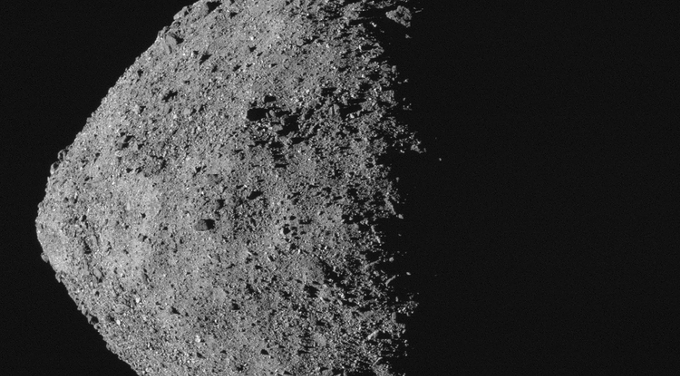Tuesday, June 2, 2020
OSIRIS-REx: New Information On Asteroids' Shapes, Formation
Scientists from the University of Arizona-led OSIRIS-REx space mission have released new findings about the origins of small astronomical bodies based on observation of the asteroid Bennu.
The OSIRIS-REx spacecraft launched from the Earth in September 2016 and is planned to return in 2023. The spacecraft, part of a NASA program, will collect rocks and dust from the surface of Bennu in order to better understand "the initial stages of planet formation and the source of organic compounds available for the origin of life." Since arriving at Bennu in December 2018, OSIRIS-Rex has mapped the asteroid's rocky and carbon-rich surface.
In studying Bennu, scientists have discovered that the asteroid is composed of fragments of larger bodies that shattered upon colliding with other objects. The small fragments then reaccumulated to form an aggregate body, which explains Bennu's extremely rough surface and a partially hollow interior.
Bennu is classified as a "spinning top" asteroid for its distinct shape with a ridge along the equator. Previously, scientists thought that this shape formed as the result of thermal forces, called the YORP effect, affecting the asteroid's spin — somewhat similar to centrifugal force.
But in a new research paper, the team argues the YORP effect may not explain the asteroid's shape: "asteroids have large impact craters on their equators, and their size suggests that these craters are some of Bennu's oldest surface features. Since the craters cover the equatorial ridges, their spinning-top shapes must also have been formed much earlier."
"Using computer simulations that model the impact that broke up Bennu's parent body, we show that these asteroids either formed directly as top-shapes or achieved the shape early after their formation in the main asteroid belt," said Ronald Ballouz, OSIRIS-REx postdoctoral researcher. "The presence of the large equatorial craters on these asteroids, as seen in images returned by the spacecraft, rules out that the asteroids experienced a recent re-shaping due to the YORP effect. We would expect these craters to have disappeared with a recent YORP-induced re-shaping of the asteroid."
Here's a UA simulation for how aggregate asteroids may form after their parent asteroids are destroyed:
The OSIRIS-REx spacecraft launched from the Earth in September 2016 and is planned to return in 2023. The spacecraft, part of a NASA program, will collect rocks and dust from the surface of Bennu in order to better understand "the initial stages of planet formation and the source of organic compounds available for the origin of life." Since arriving at Bennu in December 2018, OSIRIS-Rex has mapped the asteroid's rocky and carbon-rich surface.
In studying Bennu, scientists have discovered that the asteroid is composed of fragments of larger bodies that shattered upon colliding with other objects. The small fragments then reaccumulated to form an aggregate body, which explains Bennu's extremely rough surface and a partially hollow interior.
Bennu is classified as a "spinning top" asteroid for its distinct shape with a ridge along the equator. Previously, scientists thought that this shape formed as the result of thermal forces, called the YORP effect, affecting the asteroid's spin — somewhat similar to centrifugal force.
But in a new research paper, the team argues the YORP effect may not explain the asteroid's shape: "asteroids have large impact craters on their equators, and their size suggests that these craters are some of Bennu's oldest surface features. Since the craters cover the equatorial ridges, their spinning-top shapes must also have been formed much earlier."
"Using computer simulations that model the impact that broke up Bennu's parent body, we show that these asteroids either formed directly as top-shapes or achieved the shape early after their formation in the main asteroid belt," said Ronald Ballouz, OSIRIS-REx postdoctoral researcher. "The presence of the large equatorial craters on these asteroids, as seen in images returned by the spacecraft, rules out that the asteroids experienced a recent re-shaping due to the YORP effect. We would expect these craters to have disappeared with a recent YORP-induced re-shaping of the asteroid."
Here's a UA simulation for how aggregate asteroids may form after their parent asteroids are destroyed:












